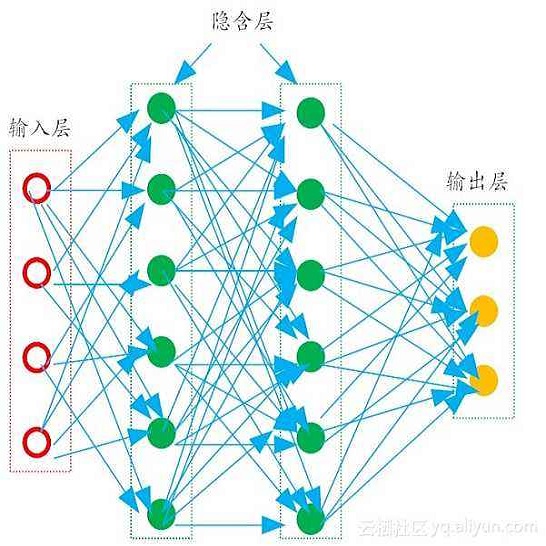The monitoring of Cs-137 in seawater using scintillation detector relies on the spectrum analysis method to extract the Cs-137 concentration. And when in poor statistic situation, the calculation result of the traditional net peak area (NPA) method has a large uncertainty. We present a machine learning based method to better analyze the gamma-ray spectrum with low Cs-137 concentration. We apply multilayer perceptron (MLP) to analyze the 662 keV full energy peak of Cs-137 in the seawater spectrum. And the MLP can be trained with a few measured background spectrums by combining the simulated Cs-137 signal with measured background spectrums. Thus, it can save the time of preparing and measuring the standard samples for generating the training dataset. To validate the MLP-based method, we use Geant4 and background gamma-ray spectrums measured by a seaborne monitoring device to generate an independent test dataset to test the result by our method and the traditional NPA method. We find that the MLP-based method achieves a root mean squared error of 0.159, 2.3 times lower than that of the traditional net peak area method, indicating the MLP-based method improves the precision of Cs-137 concentration calculation
翻译:利用闪烁探测器监测海水中Cs-137的Cs-137监测情况依靠频谱分析方法来提取Cs-137的浓度。当统计数据差时,传统净峰值区域(NPA)方法的计算结果极不确定。我们提出了一个基于机器的学习方法,以更好地分析Cs-137浓度低的伽马射线频谱。我们应用多层光谱(MLP)来分析海水频谱中Cs-137的662 keV全能量峰值。而MLP可以通过将模拟Cs-137信号与测量背景频谱相结合,对几个测量背景频谱进行培训。因此,它可以节省编制和测量生成培训数据集的标准样本的时间。为了验证基于MLP的方法,我们使用一个海运监测装置测量的Geant4和背景伽马光频谱来生成一个独立的测试数据集,以测试我们的方法和传统的NPAP方法的结果。我们发现,基于MLP的方法得出了比传统精密度计算方法低0.15、9、2.3倍于C-137的浓度峰区域的结果。我们发现,MLP方法得出了0.15的平均平方错误。



